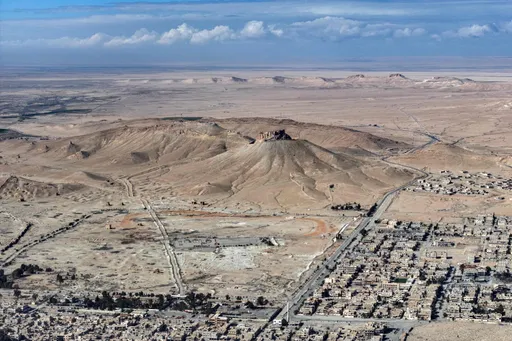Iran has begun enriching uranium with a fourth cascade, or cluster, of advanced IR-2m machines at its underground Natanz plant, a report by the UN atomic watchdog showed, in a further breach of its 2015 nuclear deal with world powers.
It was the latest of many steps by Iran raising pressure on US President Joe Biden with the two sides in a standoff over who should move first to salvage a deal that was meant to curb Iran's ability to develop a nuclear bomb, if it so intended.
READ MORE: Iran opens new missile facility amid US sanctions over nuclear pact
Nuclear deal with Iran
The deal imposed limits on Iran's nuclear activities that it started breaching in 2019 in response to a US withdrawal from the accord under Biden's predecessor Donald Trump, as well as the reimposition of US sanctions against the Islamic Republic that had been lifted under the agreement.
The deal only lets Iran enrich with relatively antiquated first-generation IR-1 centrifuges at the underground Fuel Enrichment Plant (FEP) at Natanz, a commercial-scale enrichment facility. Last year Tehran began adding more advanced centrifuges there able to enrich much faster than the IR-1.
"On 31 March 2021, the Agency verified at FEP that: Iran had begun feeding natural UF6 into a fourth cascade of 174 IR-2m centrifuges," the International Atomic Energy Agency said in its confidential report dated Wednesday and obtained by Reuters on Thursday. By UF6, it was referring to uranium hexafluoride, the form in which uranium is fed into centrifuges for enrichment.
READ MORE: Biden's dithering on Iran surrenders valuable leverage
'Two cascades not enriching'
Iran has informed the IAEA that it plans to use six cascades of IR-2m machines at the FEP to refine uranium up to 5% fissile purity. The report said the remaining two cascades were installed but not yet enriching. Installation of a planned second cascade of IR-4 machines had not yet begun, it added.
"In summary, as of 31 March 2021, the Agency verified that Iran was using 5,060 IR-1 centrifuges installed in 30 cascades, 696 IR-2m centrifuges installed in four cascades and 174 IR-4 centrifuges installed in one cascade to enrich natural UF6 up to 5% U-235 at FEP," said the report, sent to IAEA member states.
READ MORE: Western powers warn Iran against 'dangerous' inspections limit
























